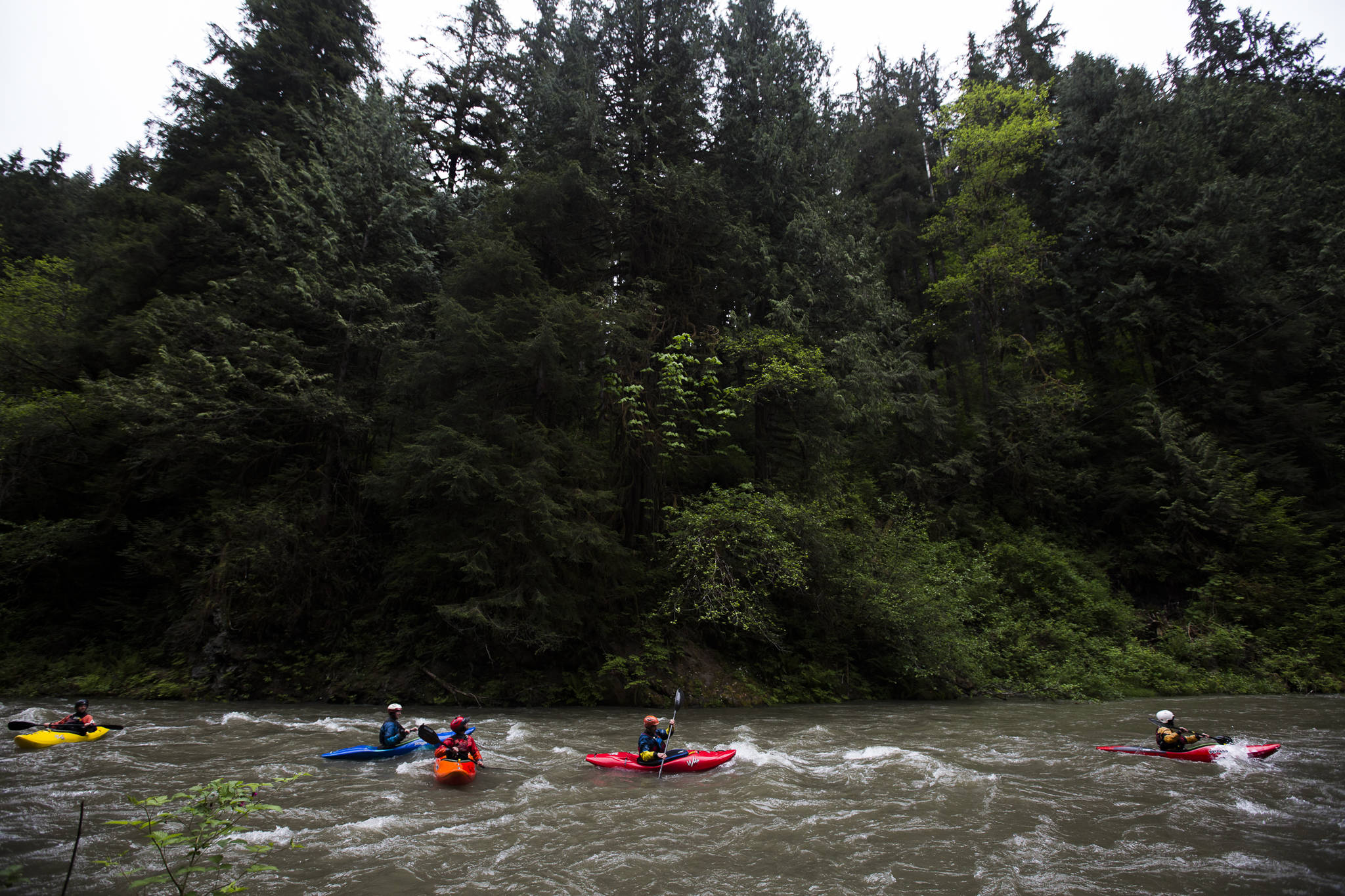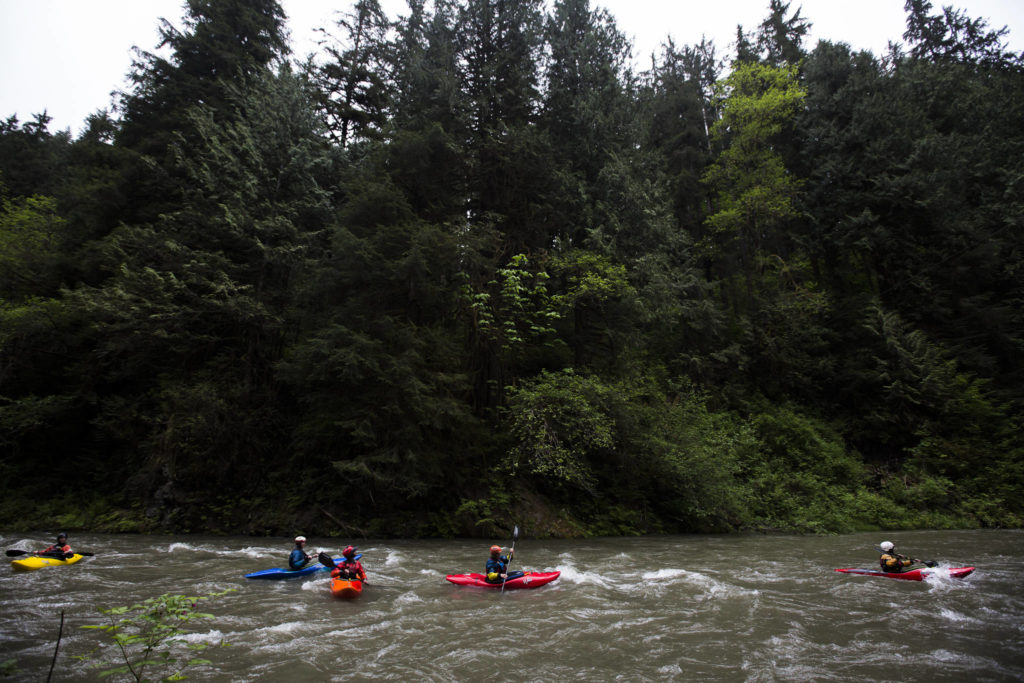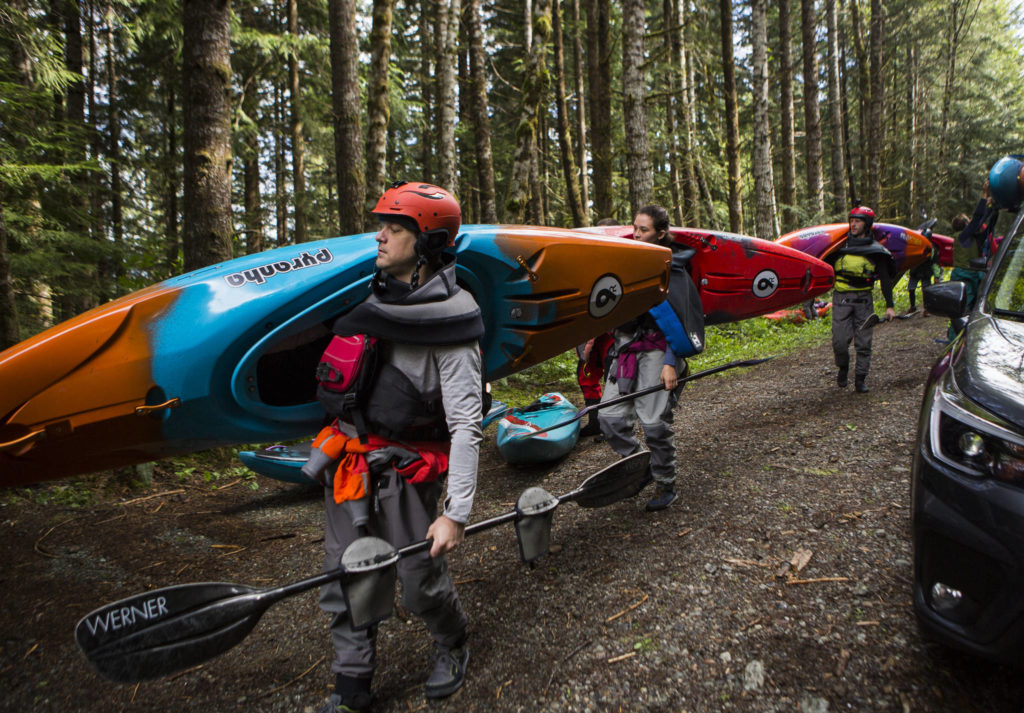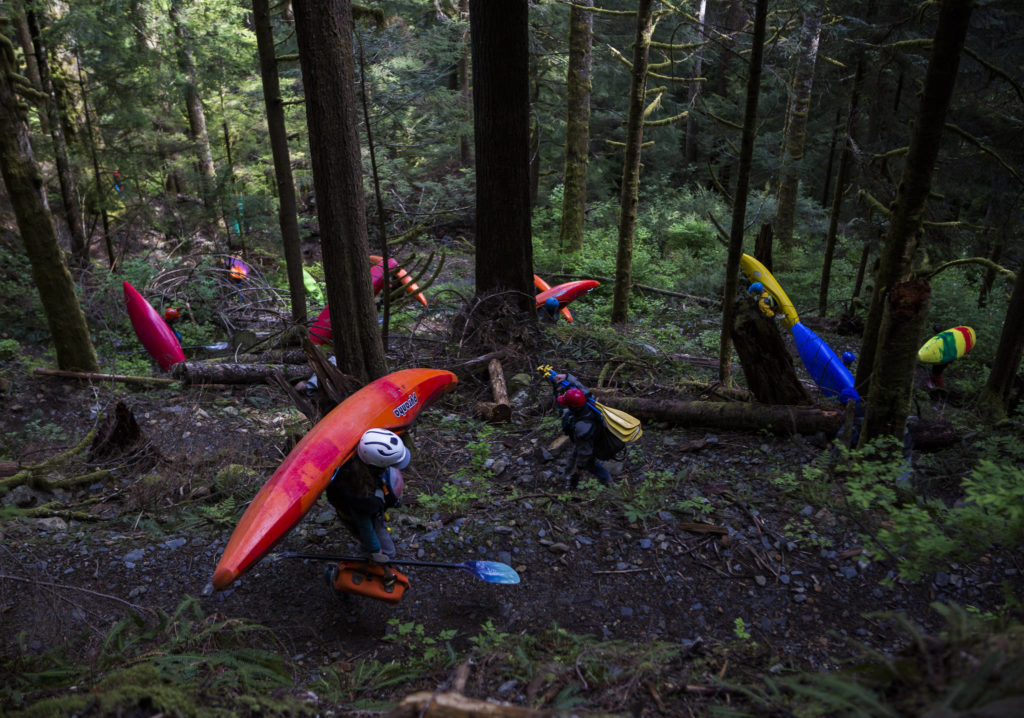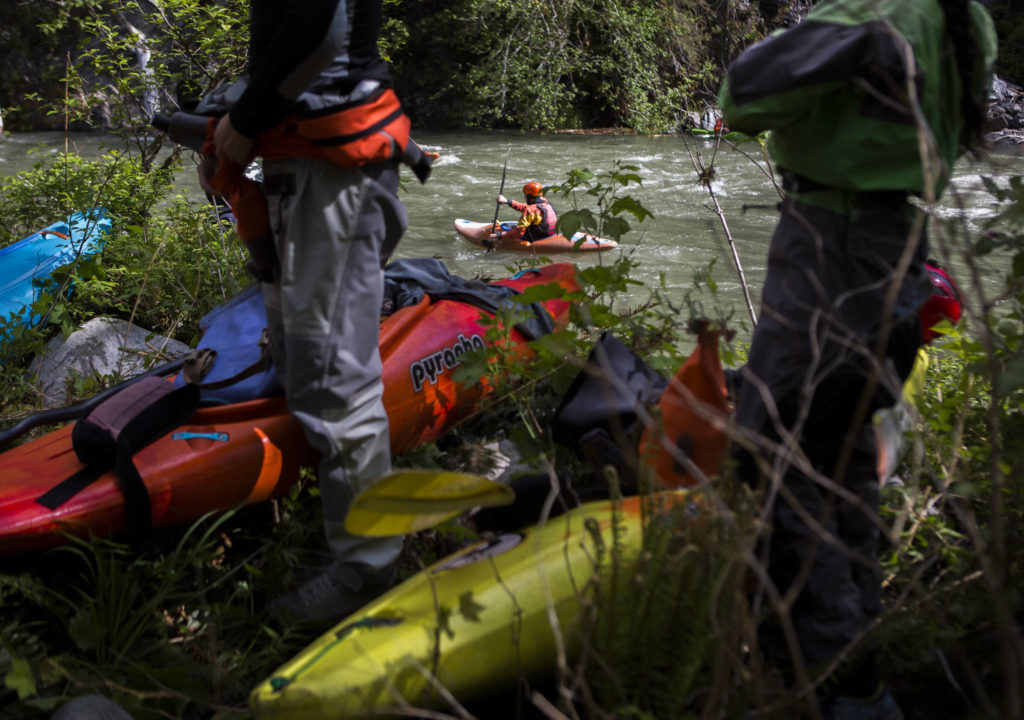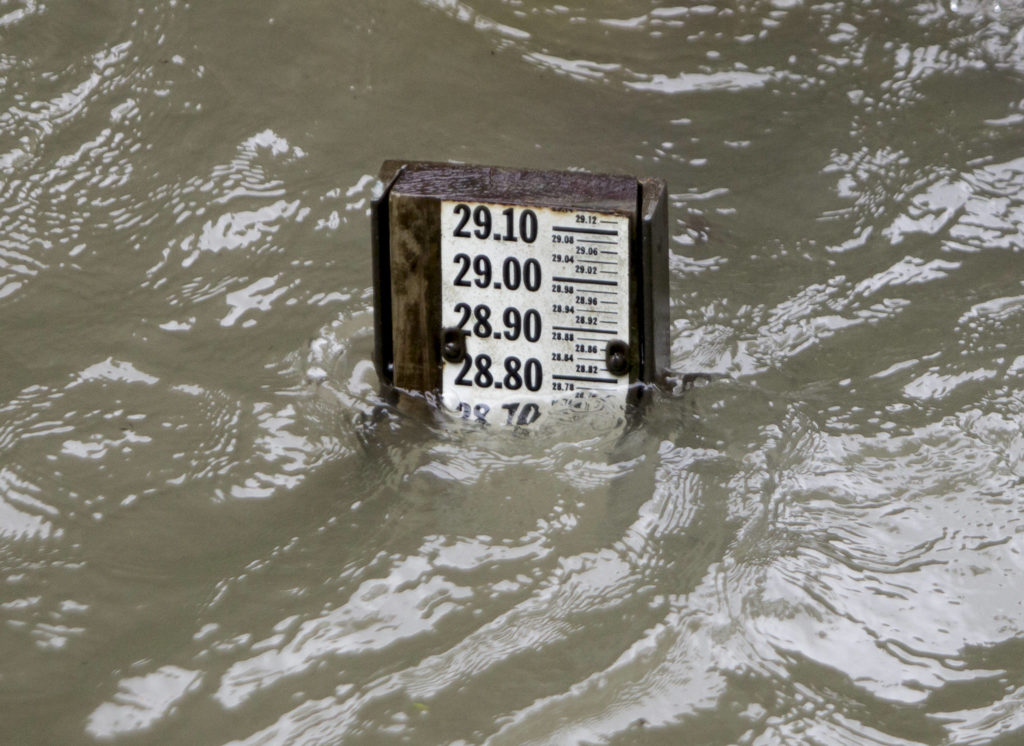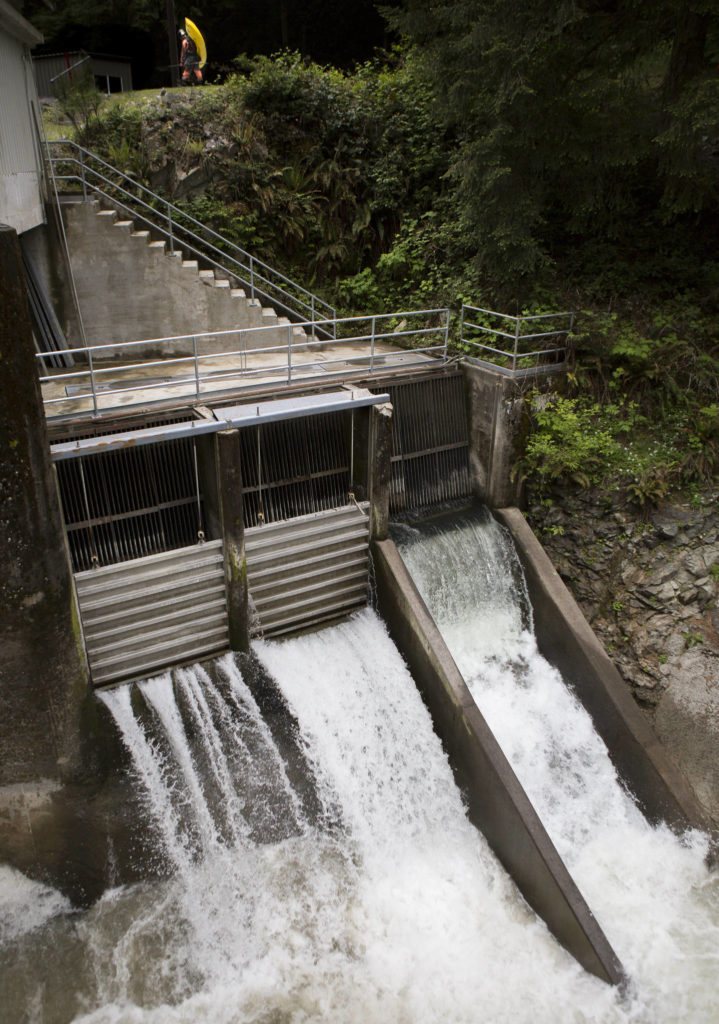SULTAN — The kayaks were all the colors of the rainbow.
Red and blue and yellow, purple and green and orange.
There were about 50 being carried in a single-file line down the steep switchbacks of the mile-long Sultan River Canyon Trail, as if it were a pilgrimage. The adventurers came from throughout the region — Snohomish, King and Whatcom counties, from Leavenworth and Tacoma, and four from Portland.
One said he had been living in Wisconsin, where recent drought conditions have affected water levels. He hadn’t been able to test his whitewater skills much, so when his buddy told him about this run, he was eager to shake off the rust.
Then there were the three guys who brought an inflatable raft, drawing laughs and excited hoots and hollers. Sure, maybe they were the slowest vessel out there, but that just means they could savor the river.
The trio didn’t wax poetic about why they were here. There was only one reason, the same as everyone:
“Whitewater!” said Mark Ledebuhr, 37, with a smile. “Pretty obvious.”
(Video by Austin Amon)
It’s an event that only happens a few times a year.
As part of its license with the Federal Energy Regulatory Commission, the Snohomish County PUD occasionally opens a valve at Culmback Dam to create the whitewater recreation opportunity, releasing water from Spada Lake and flooding the Sultan River at a rate of 900 cubic feet per second.
The releases are the result of years of negotiation leading up to the federal license renewal in 2011. Though there are far fewer opportunities to paddle the Sultan compared to a natural, free-flowing river, this was a rare opportunity to fine-tune the experience by controlling the release of water.
Thomas O’Keefe, Pacific Northwest stewardship director with American Whitewater, was part of those conversations. After studies and some live tests, he said, they settled on releasing 900 cubic feet of water per second because it struck a perfect balance. Any lower and the water level would reveal too many obstacles, like rocks. Any higher and the water starts getting too fast, too furious for a lot of people.
The release also provides some ecological benefits, such as flushing out sediment that has collected on the river bed, mimicking a high-flow event that an undammed river would typically experience.
Under the previous license, O’Keefe said, there were no provisions for whitewater recreation. In the 1980s, when the dam was raised and when the Henry M. Jackson Hydroelectric Project began operating — essentially de-watering that stretch of river — kayakers suddenly saw their chances of paddling disappear. When advocates at the time asked for accommodations, they were met with silence, O’Keefe said.
With the new license, the PUD managed to strike a compromise among the various interests for the river.
“These whitewater events are exciting and unique experiences in a very remote and beautiful area of the Sultan River basin,” said Keith Binkley, the PUD’s natural resources manager. “It’s complex business managing the river to meet all of our goals, including electricity production, protecting fish habitat and providing recreation opportunities. It’s because of our commitment to the health of the river and its fish populations that we’re able to offer these events in a way that respects our values.”
The release is done three times a year: Once in the Spring (April or May), once in late summer (August) and once in early fall (September). The PUD gives two weeks notice before each event. More information can be found at www.snopud.com/?p=2118.
Usually, kayakers can’t navigate the length of the Sultan from Spada Lake down to the Skykomish River. With the added boost, it becomes a 15-mile run with consistent Class IV to V rapids, featuring canyon sides, waterfalls and boulder gardens. American Whitewater calls it “a wonderful combination of complexity and difficulty without a sense of being truly dangerous.”
There’s almost no break in the action. Rapid leads to rapid leads to rapid. O’Keefe said it was “a physical undertaking” that should only be attempted by experienced whitewater kayakers. Those who want to try it should be in shape and prepared for the commitment, because once you’re down in the gorge, there aren’t many places to get out.
“There’s really nothing else in the entire region that long, at that difficulty level,” O’Keefe said, “and the scenery is just spectacular.”
On this particular Saturday in May, the only time the kayakers’ run was interrupted was at a diversion dam where cable lines stretched over the river to a smolt trap. They were asked to portage around the obstacle. The grassy hillside there offered a good excuse for the kayakers to take a break, bite into a power bar and catch up with each other on other runs they’ve done recently.
No one stayed long enough to dry off. Soon they were back in the water.
Down at Sportsman’s Park, just before the Sultan meets up with the Skykomish, Sean Lee, 41, and and Chase Nobles, 31, were the first to arrive, less than four hours after they began.
Lee said he’d done the run before, a few years back. It’s changed since then. A lot of logs and debris have cleared out, he said, and a section called the “landslide rapids” — once one of the most challenging sections — has smoothed out some.
A commenter on the American Whitewater website suggested that the name “landslide” is generally reserved for the toughest rapids of a run. A demotion might be in order, the commenter said — maybe call it “erosion.”
Soon Mike Nash, 49, arrived with a group in tow.
Holding one of his custom-made paddles, the New Zealander and Gold Bar resident said the dam release gave kayakers like him a chance to explore a river they otherwise couldn’t see.
“It lets us actually paddle the water,” he said.
Usually, he prefers rivers with no dam at all. But if there’s going to be one, this was a nice alternative, he said.
“It was awesome,” he said.
After his post-run analysis, Nash turned his attention to more important matters: A freshly opened can of Modelo Negra.
Zachariah Bryan: 425-339-3431; zbryan@heraldnet.com. Twitter: @zachariahtb.
Talk to us
> Give us your news tips.
> Send us a letter to the editor.
> More Herald contact information.
